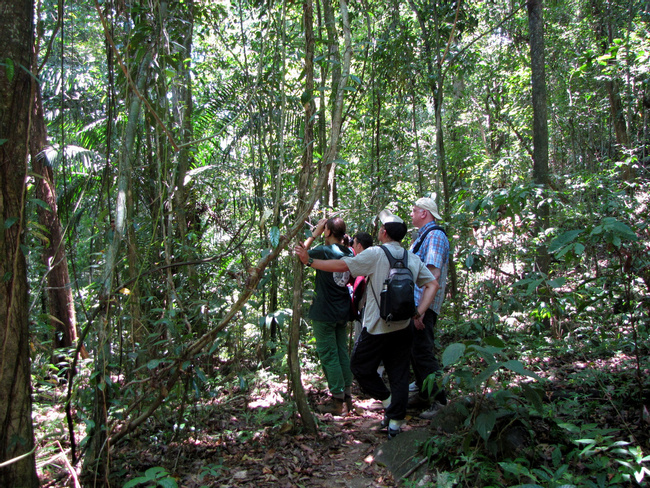
Barro Colorado
Established in 1923, the Barro Colorado Nature Monument (BCNM) is located in the middle of the Panama Canal and is the largest forested area in the Panama Canal waterway. Barro Colorado Island (BCI), together with five adjoining mainland peninsulas, forms the 5,400-hectare nature monument. Administered by the Smithsonian since 1946, Barro Colorado is home to one of the most famous biological research facilities in the world. Not surprisingly, the island’s flora and fauna have been more thoroughly studied then any other neo-tropical area of comparable size on Earth.
More about Barro Colorado
Barro Colorado was actually just a hill until 1914. However, when the mighty Chagres River was damned during the creation of the canal, a massive lake was formed, and in turn, a small island was created. Today, Barro Colorado is teeming with nature and wildlife. Every year the research facilities on BCI host around 200 scientists from around the world. With modern laboratory facilities, a cafeteria, and accommodations available for resident researchers, the Field Research Station has all the necessary infrastructure to conduct in-depth scientific studies.
Over 480 species of trees compose the thriving forest that covers the island—a number which is more than all of Europe combined. Five species of monkey, all native to Panama, live on Barro Colorado, including the spider monkey, white-faced capuchin, Geoffrey’s tamarin, howler monkey, and night monkey. There are 70 species of bats, 384 species of birds, and more then 200 species of ants on the island. Also in abundance are anteaters, agoutis and American crocodiles.
Because BCI is a research facility, access for visitors is regulated. It is not possible to visit the island on one’s own—those interested in spending a day on Barro Colorado should contact BCI as far in advance as possible. All the administrators speak fluent English and will explain the details of the visit upon confirmation. There is a fee for visiting, although they do offer a good deal for students. The fee covers the roundtrip boat ride to the island, a 2-3 hour guided hike and lunch in the cafeteria. Visits can be exciting, as there are many opportunities to chat up the scientists and learn about the research that is currently underway. The tours include time in the greenhouse and museum, as well as a stop at the small gift shop where visitors can buy keepsakes to commemorate their visit.
The guided hike is the highlight of the visit. The naturalists are usually young scientists who are passionate about the forest and extremely knowledgeable about the flora and fauna on BCI. They help spot wildlife and make interesting, educational observations during the walk. At the end of the hike, visitors are often led down to the lake to search for sunning crocodiles.
Barro Colorado is one of the most studied places on Earth and has become a prototype in the scientific world for measuring diversity of plant and animal life in similar climates. A visit to Barro Colorado offers the opportunity to discover the intricacies of a humid tropical forest with the knowledgeable assistance of a professional researcher.
The Smithsonian can be contacted at tel.212-8951, fax 212-8026, stribci@si.edu, and the Smithsonian Tropical Institute website. They only conduct tours on certain days of the week and all the tours start early in the morning. The boat launch for the island is in Gamboa, about a 45-minute drive from Panama City.
We believe travel is more than ticking destinations off a list – it’s about discovering new places deeply, feeling connected wherever you go, and knowing you have a trusted team behind you every step of the way.



